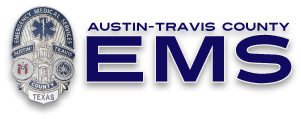Infant Safe Sleep
Safety for sleeping babies is simple and as easy as A-B-C. Babies should sleep:
- Alone: Bed-sharing, which is sleeping with a baby on a bed, couch, floor or in a chair, is dangerous. Babies should sleep alone, not with an adult, child or animal. Room sharing with a baby is a better way to sleep near your little one.
- On their Back: Not on their side or tummy. Place babies on their back for every sleep time, including naps and at night.
- In a safety-approved Crib: Put babies on a firm surface, preferably a safety-approved crib with a firm crib mattress covered by a fitted sheet. Do not use bumper pads, pillows, blankets, sheep skins, soft objects, toys or stuffed animals anywhere in your baby’s sleep area. (Safety approved bassinets; play yards and portable cribs are acceptable).
Room-sharing without bed-sharing is recommended—There is evidence that this arrangement decreases the risk of SIDS by as much as 50%.5,7,30,31 In addition, this arrangement is most likely to prevent suffocation, strangulation, and entrapment that might occur when the infant is sleeping in an adult bed.
- The infant's crib, portable crib, play yard, or bassinet should be placed in the parents' bedroom close to the parents' bed. This arrangement reduces SIDS risk and removes the possibility of suffocation, strangulation, and entrapment that might occur when the infant is sleeping in the adults' bed. It also allows close parental proximity to the infant and facilitates feeding, comforting, and monitoring of the infant.
- Devices promoted to make bed-sharing “safe” (eg, in-bed co-sleepers) are not recommended.
- Infants may be brought into the bed for feeding or comforting but should be returned to their own crib or bassinet when the parent is ready to return to sleep.6,32 Because of the extremely high risk of SIDS and suffocation on couches and armchairs,3,5,6,31,32 infants should not be fed on a couch or armchair when there is a high risk that the parent might fall asleep.
- Epidemiologic studies have not demonstrated any bed-sharing situations that are protective against SIDS or suffocation. Furthermore, not all risks associated with bed-sharing, such as parental fatigue, can be controlled. Therefore, the American Academy of Pediatrics (AAP) does not recommend any specific bed-sharing situations as safe. Moreover, there are specific circumstances that, in epidemiologic studies, substantially increase the risk of SIDS or suffocation while bed-sharing. In particular, it should be stressed to parents that they avoid the following situations at all times:
- Bed-sharing when the infant is younger than 3 months, regardless of whether the parents are smokers or not.5,7,31,–,34
- Bed-sharing with a current smoker (even if he or she does not smoke in bed) or if the mother smoked during pregnancy.5,6,34,–,36
- Bed-sharing with someone who is excessively tired.
- Bed-sharing with someone who has or is using medications (eg, certain antidepressants, pain medications) or substances (eg, alcohol, illicit drugs) that could impair his or her alertness or ability to arouse.7,37
- Bed-sharing with anyone who is not a parent, including other children.3
- Bed-sharing with multiple persons.3
- Bed-sharing on a soft surface such as a waterbed, old mattress, sofa, couch, or armchair.3,5,6,31,32
- Bed-sharing on a surface with soft bedding, including pillows, heavy blankets, quilts, and comforters.3,38
- It is prudent to provide separate sleep areas and avoid co-bedding for twins and higher-order multiples in the hospital and at home.39
Passenger Safety for Babies
Make sure your baby is safely secured in the right car seat. The most important tip: Keep your child rear facing for as long as possible. Stay rear facing until your child has outgrown the car seat by weight or height. Many children will be able to take advantage of this safer ride beyond age 2 or even 3. Visit the Safe Kids Worldwide website for information about the different types of car seats for children, installation tips, checklists (in multiple languages), and when to change the type of car seat for your child.
Other useful websites:
www.nichd.nih.gov/sts/about/environment/Pages/default.aspx.
http://pediatrics.aappublications.org/content/128/5/1030.full?sid=86f50326-1882-4dec-8c25-87b015f0d4e0

